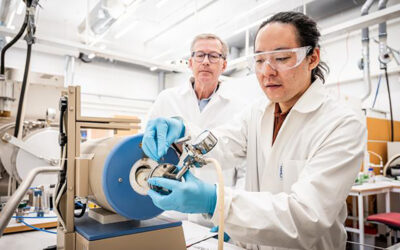Adhesives are playing an increasingly important role in the processing industry, as well as in traditional handicraft. In almost every area of application, adhesives are now successfully supplementing or replacing the conventional methods of joining parts, such as welding, riveting, or screwing.
Besides important parameters like curing temperature or curing time, strength of the bond is a central parameter to a robust adhesive. In this vein, Delo, a manufacturer of industrial adhesives for automotive, consumer, and industrial electronics applications, has broken the world record for the heaviest lift using an adhesive material; a crane was used to lift a 17.5-ton truck on a bonded aluminum cylinder, beating the previous record of 16.3 tons.
The truck was lifted 1 m using only 3 g of adhesive, and hung for 1 h on a bonded aluminum cylinder with a radius of just 3.5 cm. In addition to about 600 employees, two local politicians, and an official adjudicator from Guinness World Records were present to witness and confirm the new world record.
This adhesive, which is now officially strongest in the world, was developed for the record attempt. It is a further development of a high-temperature-resistant glue, a one-component, heat-curing epoxy resin, known for its high strength, and already in use in the automotive industry. Electric motors in electric cars, for example, would be inconceivable without these adhesives.
“We made it!” said Sabine Herold, managing partner of Delo. “The great result is an absolute team success, which also shows how we work every day.” It is a team success, as the quality of a bond not only depends on the quality of the adhesive, but above all on the surface quality of the materials to be bonded. To get highest forces, the adhesive must be able to adapt to the surfaces in order to minimize the distance between the adhesive surface and the material surface. Thus, these forces can be optimally formed when the adhesive is applied thinly and evenly, which is another challenge.

















